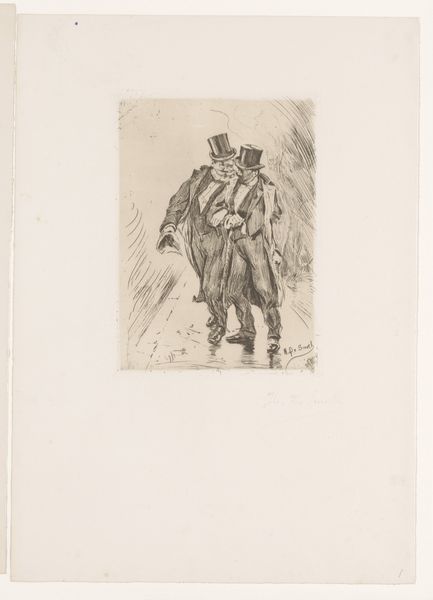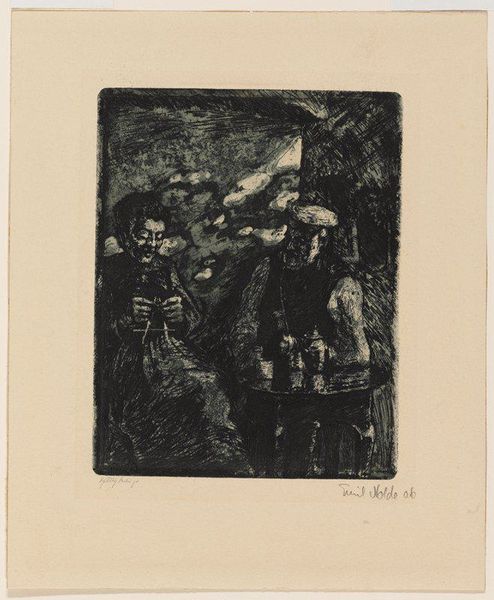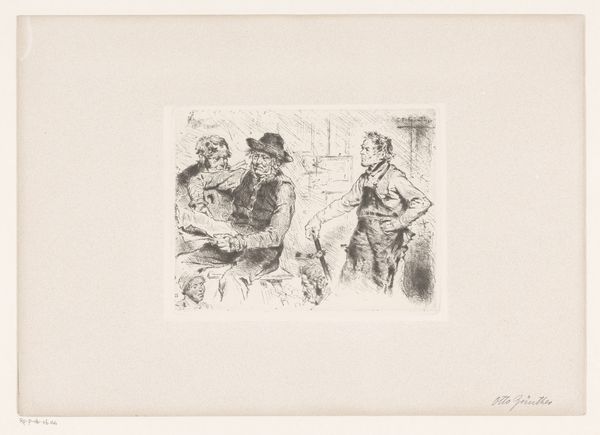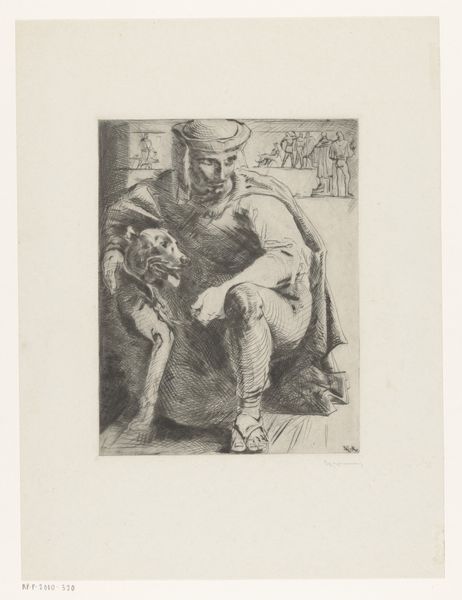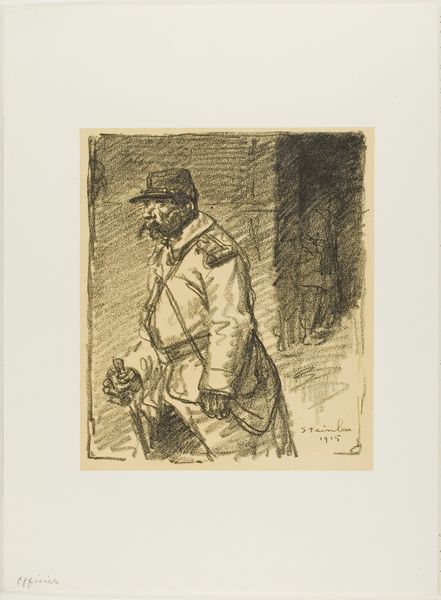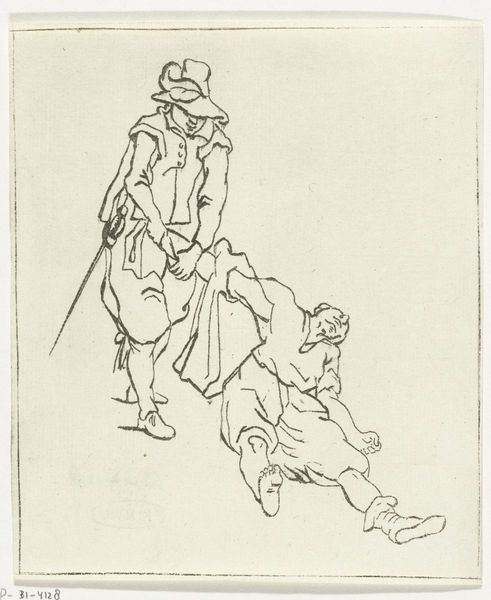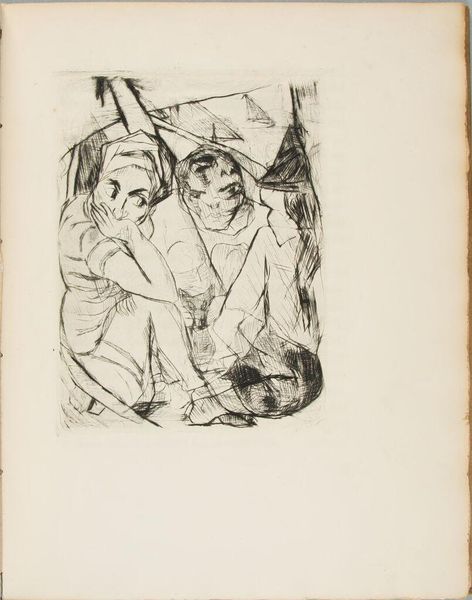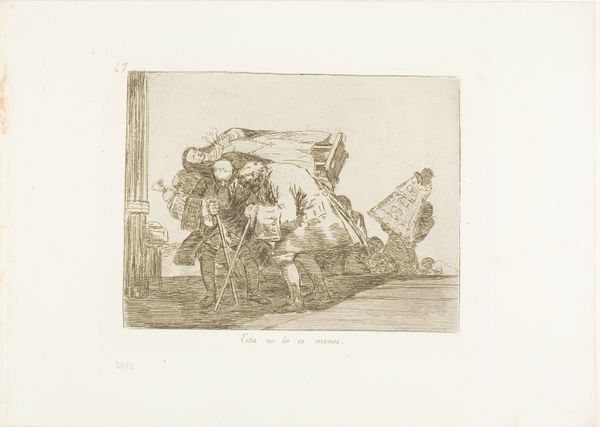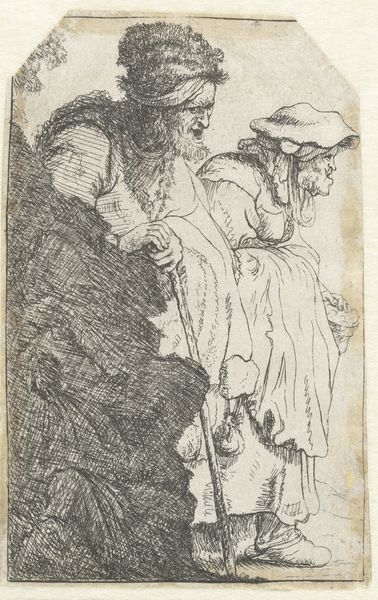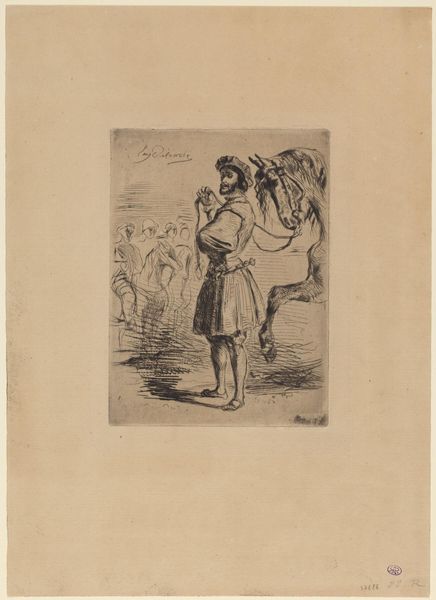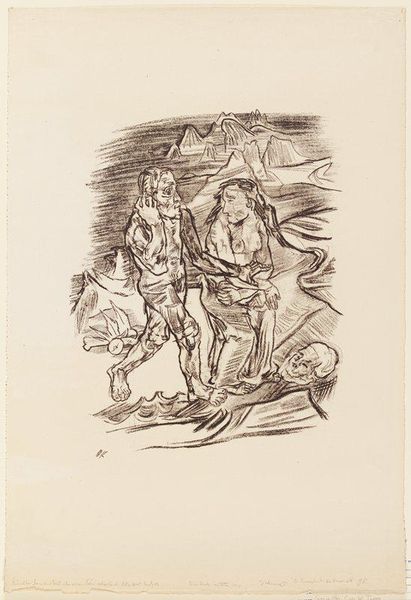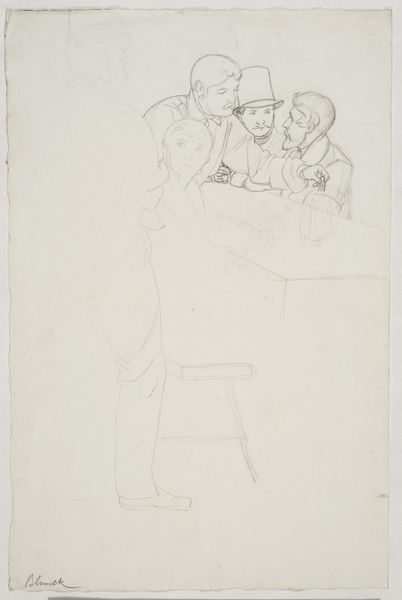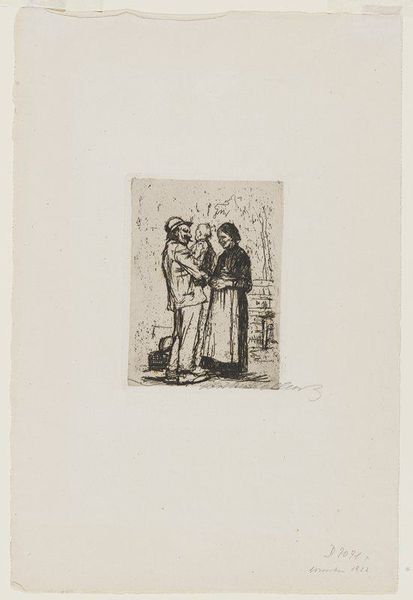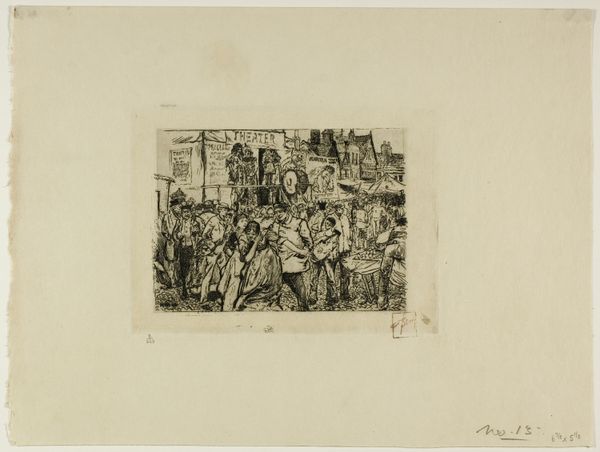
Copyright: Public domain
Curator: This stark image immediately strikes a somber note, wouldn’t you agree? It feels incredibly heavy, almost like wading through mud, just like those figures there. Editor: Precisely. The artwork we’re looking at is "Soldats Sous La Pluie et Dans Les Fondrières," or "Soldiers in the Rain and Mire," by Théophile Alexandre Steinlen, created in 1915. He utilized etching and ink to achieve this very textured print. Curator: Etching…yes, the visible crosshatching and varied line weights are clearly visible in the bodies and the spaces they are occupying; how do you see it shaping the image, formally? Editor: Well, look how the light struggles to emerge in a composition dominated by the downward scratching; in these grim, shadowed visages and burdened forms, one feels the unrelenting deluge, both literal and psychological. And look at the signature! 'T. Steinlen': as if he himself only had a bare, reduced mark on the face of things! Curator: I would agree; for me the means of production can't be ignored: here we have what feels like a mass-producible print aimed at a mass audience during the First World War. What could it have meant for those at home looking at it? Editor: Consider how he manages to distill so much despair into something relatively small. Curator: It speaks volumes about how printmaking could democratize not only art but social commentary in times of crisis. Editor: I notice, too, how he does that. Observe how the lines both define and dissolve the figures simultaneously, almost like they're one and the same with the harsh atmosphere they have to contend with! Curator: By distributing prints, an artist could voice their concerns more publicly at a time when propaganda machinery often overshadowed dissenting opinions. Editor: Absolutely. Seeing it as part of a historical moment is one important lens. But also understanding its own formal and aesthetic achievement brings us to what? It has, for over a hundred years, moved viewers. Curator: Precisely: the intersection of historical context, artistic choices, and accessible formats—I mean, these aspects invite many levels of understanding, making this such an affecting historical object. Editor: Absolutely. And in that way, one might glimpse how such an image becomes timeless, and what accounts for its emotional grip over decades of change.
Comments
No comments
Be the first to comment and join the conversation on the ultimate creative platform.
